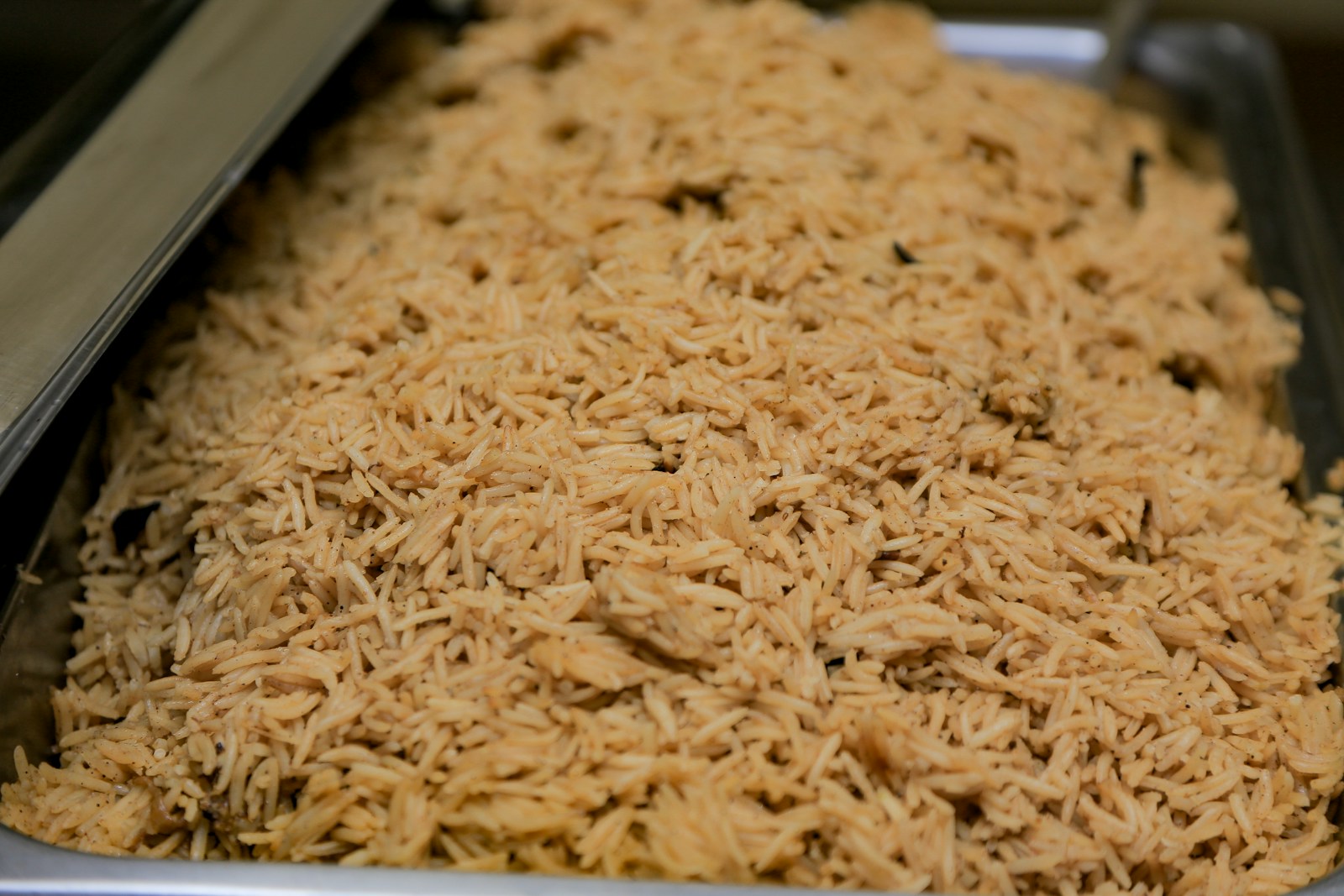Rice is a staple food in many diets around the world, with white rice and brown rice being the most commonly consumed varieties. When it comes to choosing between the two, the debate often revolves around which one is healthier. Brown rice is frequently promoted as the more nutritious option, but is it really better for everyone? In this article, we’ll explore the differences between brown and white rice, examine their nutritional profiles, and discuss the benefits and potential drawbacks of each. Understanding the Difference Between Brown Rice and White Rice
What is Brown Rice?
Brown rice is a whole grain that contains all parts of the grain—the bran, germ, and endosperm. The outer hull is removed, but the bran and germ layers remain intact, which is why it retains its brown color and offers more nutrients than white rice. This minimal processing helps preserve the essential nutrients, and it makes brown rice a more natural choice, often favored by those looking to eat cleaner or follow a whole-foods diet.
What is White Rice?
White rice is milled and polished to remove the bran and germ, leaving only the starchy endosperm. This process gives white rice its lighter color and smoother texture, but it also strips away many of the nutrients found in the bran and germ, including fiber, vitamins, and minerals. However, in many countries, white rice is enriched with added nutrients such as iron and some B vitamins to compensate for the loss during processing. This makes white rice a viable option for those who prefer its texture and taste but still want to gain some nutritional benefits.
Nutritional Comparison: Brown Rice vs. White Rice
Fiber Content
One of the key differences between brown rice and white rice is their fiber content. Brown rice is much higher in fiber because it retains the bran layer. A cup of cooked brown rice contains about 3.5 grams of fiber, while the same amount of white rice has less than 1 gram. The higher fiber content in brown rice supports better digestion, helps maintain healthy blood sugar levels, and can promote satiety, which is beneficial for weight management.
Practical Tip: Increase Fiber Intake
If you’re looking to increase your fiber intake without making a complete switch to brown rice, consider mixing brown and white rice together. This combination can help you gradually adjust to the texture and taste of brown rice while still boosting your fiber intake.
Vitamins and Minerals
Brown rice is richer in essential vitamins and minerals compared to white rice. Because the bran and germ are intact, brown rice contains more magnesium, phosphorus, selenium, manganese, and B vitamins like thiamin, niacin, and B6. These nutrients play vital roles in energy production, bone health, and immune function.
White rice, on the other hand, is often enriched with synthetic vitamins, but it lacks the naturally occurring nutrients that brown rice provides. However, for individuals who may have specific dietary needs or restrictions, the enriched white rice can still serve as a valuable source of nutrients.
Case Study: Nutrient Impact
A study published in the Journal of Nutrition found that populations consuming high amounts of whole grains, including brown rice, had better overall health markers, such as lower cholesterol levels and reduced risk of type 2 diabetes. This was attributed to the higher nutrient density found in whole grains compared to their refined counterparts.
Glycemic Index
The glycemic index (GI) measures how quickly a food raises blood sugar levels. Brown rice has a lower glycemic index than white rice, making it a better option for people with diabetes or those trying to manage their blood sugar. The fiber content in brown rice helps slow down the absorption of carbohydrates, leading to a more gradual increase in blood sugar levels. White rice, with its higher GI, can cause more rapid spikes in blood sugar.
Managing Blood Sugar Levels
For those managing their blood sugar, consider pairing rice with protein and healthy fats, such as grilled chicken and avocado, to further slow down carbohydrate absorption. This balanced approach can help maintain more stable blood sugar levels.
Antioxidants
Brown rice contains more antioxidants, thanks to the presence of the bran layer. These antioxidants, such as phenolic compounds, can help reduce inflammation and protect against oxidative stress. White rice lacks these protective compounds due to the milling process that removes the bran. Antioxidants play a crucial role in reducing the risk of chronic diseases, including heart disease and cancer.
Antioxidant-Rich Meals
To maximize antioxidant intake, consider creating meals that combine brown rice with other antioxidant-rich foods like vegetables, nuts, and seeds. A brown rice salad with spinach, almonds, and a sprinkle of pomegranate seeds can be both nutritious and delicious.
Calories and Carbohydrates
Both brown rice and white rice are similar in terms of calorie and carbohydrate content. A cup of cooked brown rice contains about 215 calories and 45 grams of carbohydrates, while a cup of cooked white rice has around 205 calories and 45 grams of carbohydrates. While the calorie difference is minimal, the nutritional quality of those calories varies significantly due to the factors mentioned above.
Weight Management Strategies
If you’re watching your caloric intake, portion control is key regardless of whether you choose brown or white rice. Using a measuring cup can help ensure you’re eating a balanced portion that aligns with your dietary needs.
Health Benefits of Brown Rice
Better Digestive Health
The higher fiber content in brown rice promotes healthy digestion, prevents constipation, and supports gut health by feeding beneficial bacteria. A healthy gut microbiome is linked to improved mood, immune function, and even weight management.
Heart Health
Brown rice contains compounds like magnesium and fiber that are associated with a lower risk of heart disease. Magnesium helps regulate blood pressure, while fiber can reduce cholesterol levels. Incorporating brown rice into a heart-healthy diet, which includes plenty of fruits, vegetables, and lean proteins, can be a step toward better cardiovascular health.
Weight Management
The fiber in brown rice can help you feel fuller for longer, reducing overall calorie intake and supporting weight loss or maintenance goals. This satiety factor makes brown rice a helpful food for those looking to manage their weight effectively.
Blood Sugar Control
For those with diabetes or at risk of developing it, brown rice’s lower glycemic index and higher fiber content make it a better choice for maintaining stable blood sugar levels. Regular consumption of brown rice as part of a balanced diet can contribute to long-term glycemic control.
Nutrient Density
Brown rice offers more vitamins, minerals, and antioxidants, contributing to overall better health. This nutrient density is why many health professionals advocate for whole grains as part of a balanced diet.
Health Benefits of White Rice
Easily Digestible
White rice is often easier to digest than brown rice, making it a better option for those with digestive issues or conditions like irritable bowel syndrome (IBS). The lack of fiber means it’s less likely to cause bloating or gas.
Quick Source of Energy
White rice is quickly digested and absorbed, making it a good choice for athletes or those needing a fast source of energy. Its high glycemic index can be beneficial in certain situations, like post-exercise recovery.
Athletic Performance
Athletes might consume white rice for a quick energy boost before or after intense training sessions or competitions. Combining white rice with a protein source, such as grilled fish, can aid in muscle recovery.
Fewer Antinutrients
Brown rice contains antinutrients like phytic acid, which can reduce the absorption of minerals like iron and zinc. While these antinutrients are not harmful for most people, those with nutrient deficiencies or certain health conditions may prefer white rice.
Enhancing Mineral Absorption
For individuals worried about mineral absorption, combining white rice with foods high in vitamin C, such as bell peppers or citrus fruits, can enhance iron absorption.
Versatility and Texture
White rice’s softer texture and neutral flavor make it more versatile in a variety of dishes. Its longer shelf life also makes it a convenient pantry staple.
Potential Drawbacks of Brown Rice
Digestive Issues
For some people, the high fiber content in brown rice can cause digestive discomfort, bloating, or gas. Slowly increasing fiber intake and staying hydrated can help mitigate these issues.
Antinutrients
The presence of phytic acid in brown rice can inhibit the absorption of certain minerals, although soaking or sprouting the rice can reduce this effect.
Cooking Techniques
To reduce antinutrients, try soaking brown rice in water for a few hours before cooking. This simple step can improve mineral absorption and make the rice easier to digest.
Cooking Time and Texture
Brown rice takes longer to cook than white rice and has a chewier texture, which some people may not prefer. Using a rice cooker with a brown rice setting can ensure even cooking and a better texture.
Potential Drawbacks of White Rice
Blood Sugar Spikes
The high glycemic index of white rice can cause rapid spikes in blood sugar, making it less ideal for those with diabetes or insulin resistance.
Balancing Blood Sugar
To balance blood sugar levels, consider adding a source of protein or healthy fat to meals containing white rice. Foods like beans, tofu, or chicken can help slow down carbohydrate absorption.
Lower Nutritional Value
White rice is less nutrient-dense than brown rice, as the milling process removes much of the fiber, vitamins, and minerals.
Weight Gain Risk
Due to its lower fiber content and higher glycemic index, white rice may contribute to overeating and weight gain if consumed in large amounts.
Mindful Eating
Practice mindful eating by savoring each bite and paying attention to hunger cues. This approach can prevent overeating and help maintain a healthy weight.
Making the Choice: Brown vs. White Rice
The answer to whether brown rice is healthier than white rice depends on your individual health goals, dietary needs, and preferences. If you’re looking for a nutrient-dense option with more fiber, vitamins, and minerals, brown rice is generally the healthier choice. It’s particularly beneficial for those focused on heart health, weight management, and stable blood sugar levels.
On the other hand, if you have digestive sensitivities, need quick energy, or prefer a softer texture, white rice might be a better fit. While it’s less nutritious than brown rice, it still provides valuable energy and can be enriched with essential vitamins.
Ultimately, the best choice is the one that aligns with your health needs and fits your lifestyle. Both brown and white rice can be part of a balanced diet when consumed in moderation. Consider your nutritional priorities and how each type of rice complements your overall dietary plan.
Practical Tip: Experiment with Recipes
Experiment with different recipes to find enjoyable ways to incorporate both brown and white rice into your diet. From stir-fries to pilafs, the versatility of rice allows for endless culinary possibilities.
Final Thoughts
Whether you choose brown or white rice, remember that variety and moderation are key components of a healthy diet. By understanding the nutritional benefits and drawbacks of each type of rice, you can make informed choices that support your health and well-being.




